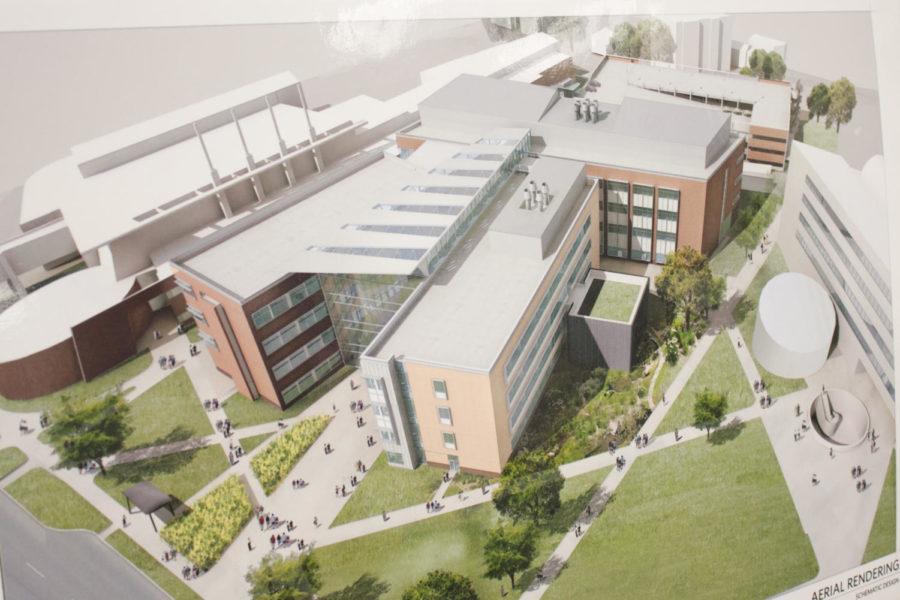Construction on Biorenewables Complex set for after spring break
March 7, 2012
The space between Howe Hall and the Design Building is home to Biorenewables Research Laboratory, which has stood alone for a long time. ISU students and faculty will return from spring break to find fences roping off the future site of Sukup Hall and Atrium and Elings Hall.
Biorenewables will also undergo construction in order to be linked to Sukup Hall via Sukup Atrium. The collective name of current building and the new additions will be called the Biorenewables Complex. The plans of the complex have been in the works since 2006.
The Biorenewables Complex will be the new home to the agricultural and biosystems engineering department. The department currently is spread out among four buildings — Davidson Hall, the National Swine and Research Information Center, Advanced Machinery Systems Lab, and Industrial Education II. The Biorenewables Complex will give the department a more centralized home with state of the art classrooms and a 150-person lecture hall.
“Ag engineering is fortunate in that we’re at the intersection of some pretty important things in the state,” said Jay Harmon, professor of agricultural and biosystems engineering. “Agriculture, engineering and agricultural production, of course, is huge in Iowa.”
Harmon believes the importance of agricultural and biosystems engineering in relationship to both the rural and urban aspects of Iowa as one of the reasons why his department is being granted new buildings in addition to other reasons. Since the conception of the Biorenewables Complex, Harmon has described himself as a liaison between the architects of the project and the department.
Davidson Hall, the current headquarters of agricultural and biosystems engineering, is to be demolished sometime after the completion and migration to Biorenewables Complex. With the hall named for J.B. Davidson, the pioneer of agricultural engineering and ISU faculty member, Harmon hopes Davidson will be honored by a large mural and conference room in the Biorenewables Complex.
The current agricultural and biosystems engineering department houses about 550 to 600 students, Harmon estimates, and works on research involving harvesting biomass and corn stover, air quality emissions from swine units, water quality, and developing green technology.
Students who are not majoring in agricultural and biosystems engineering will still find reason to visit the Biorenewables Complex. Harmon hopes the Sukup Atrium will be home to large events and a place for students to interact. The complex will house a small cafe, and the atrium is specifically constructed to encourage students to linger.
“We want everyone to hang out there,” Harmon said. “A lot of people get intimidated by the word ‘ag’ because they think, ‘Well, I didn’t grow up on a farm,’ but agriculture is lot more than a barn and a few pigs.”
Mark Huss, project manager of the complex, estimates construction will be finished for fall 2014. Huss said students should expect the first stage of construction to include a lot of digging for foundations, saying the new buildings will be built simultaneously.
Elings Hall will be named after Virgil Elings, an alumnus of Iowa State who donated $5 million to the building of the Biorenewables Complex.
Sukup Hall and Atrium is named after Eugene and Mary Sukup, long time contributors to Iowa State who have donated several visible gifts in addition to running an agricultural-orientated company. The Sukup family currently has two grandchildren in the College of Engineering.
Harmon hopes the Biorenewables Complex will help Iowa State gain more ground as an already credible world leader in agricultural and biosystems engineering education.
“I’d like to think that we know how to make things happen,” Harmon said.

















